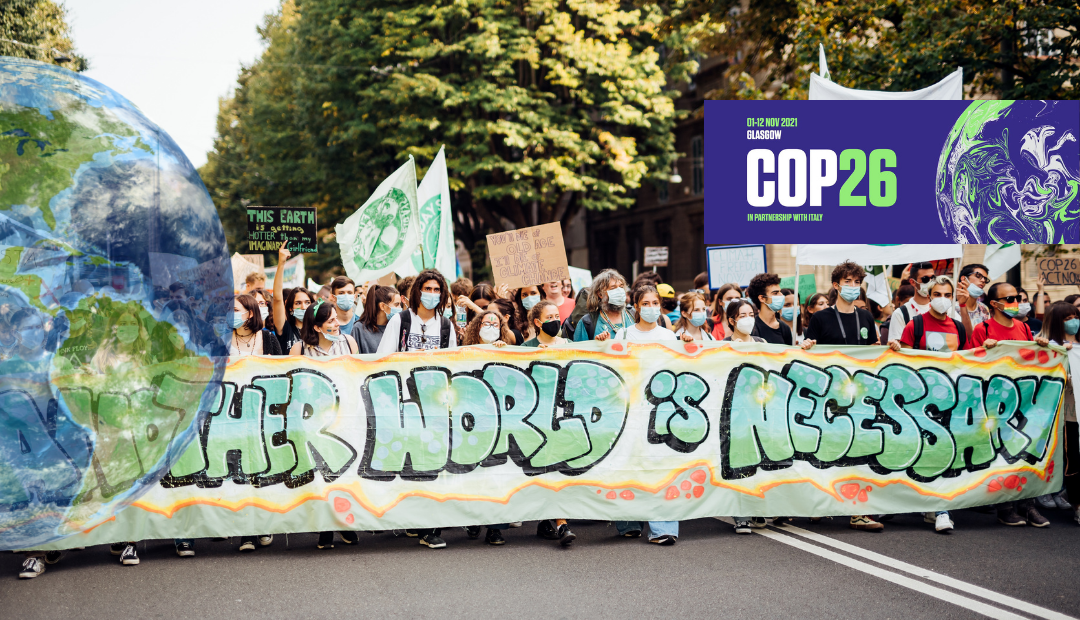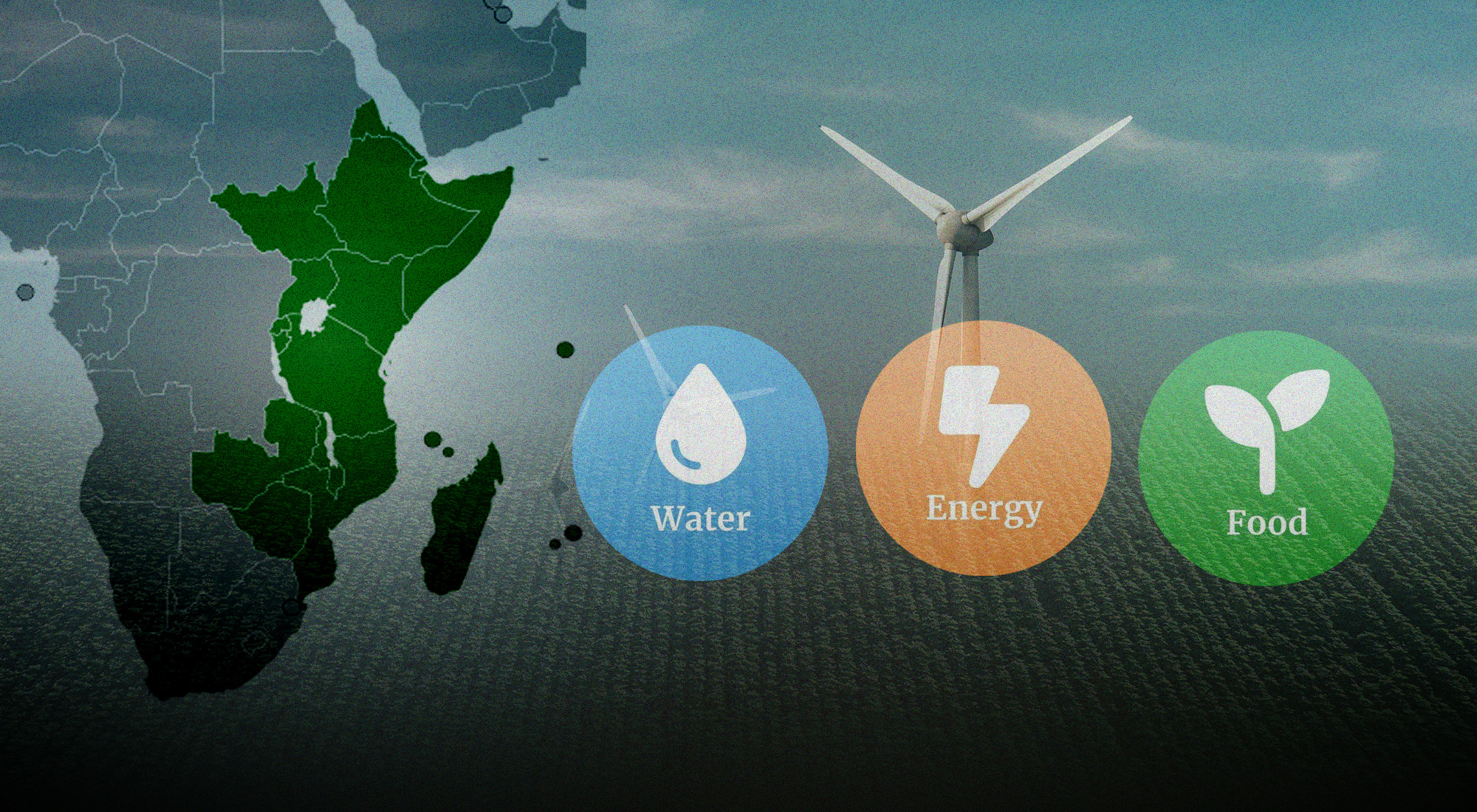For the last 18 months, had it not been for the COVID-19 pandemic that has hit the world on so many levels, the global discourse would quite rightly have been dominated by the question of how to contain the potential cataclysm that global climate change threatens to bring about. After the emergence of a young and unlikely hero in the form of Swedish teenager Greta Thunberg to lead the charge, not only against climate change sceptics and deniers, but with even more vigor against climate change apathy, a global movement to combat global warming rapidly gathered momentum. It is inspired not only the young who want to raise their voices and take action, but also adults.
Certainly, Thunberg’s single-mindedness, eloquence and courage caught the world’s imagination. But it was also the timing of her appearance on the world stage, as more and more scientific evidence combined with stronger community experiences of the impact of global warming that helped in marginalizing, if not completely eliminating, any doubt that climate change is real, is here, is anthropogenic, and is endangering the future of planet earth and with it humanity as we know it.
At the end of October, the UK will host the COP26 UN Climate Change Conference, a summit which has been labelled by many as the final opportunity for containing climate change and saving the planet. It is nearly 50 years since the first international environmental summit, the United Nations Conference on the Environment, took place in 1972 in Stockholm, to be followed by the First World Climate Conference seven years later in Geneva. These have been 50 wasted years in terms of changing our environmentally damaging habits and lifestyles and avoiding the crisis we are now faced with. The consequence is that drastic measures are now inevitable and demand from us an almost instant change in our daily behavior and activities.
One climate summit after another – Rio in 1992, the 1997 Kyoto Protocol and the 2015 Paris Agreement – explicitly warned that greenhouse gas emissions are rapidly rising and causing our planet’s climate to change with increasingly damaging results. Despite this, the world opted for economic growth, but it was the same old unsustainable growth. At this point in history, humanity has reached a point vis-à-vis its relations with nature where there is no room for any form of climate change denial or procrastination, and catastrophe is inevitable unless world leaders take decisive steps to tackle this emergency and mobilize their nations to stop man-made global warming.
As if by design, nature has decided to demonstrate the severe impact of climate change in various parts of the world this summer. Unprecedented and deadly heatwaves in Northwest America broke Canada’s temperature record by over 5 degrees Celsius, and in the US states of Washington and Oregon temperatures reached nearly 7 degrees Celsius above average, causing massive wildfires and leaving more than 600 people dead. Further devastation was caused by relentless floods in China and Western Europe after record-breaking rainstorms, and a horrendous monsoon season in India, all claiming many hundreds of lives and leaving a trail of destruction in their wake. Moreover, the number of extremely hot days per year, when the temperature reaches 50 degrees Celsius, has doubled since the 1980s, much of these occurrences taking place in the Middle East.
Climate change denial belongs to a tiny minority, but it is a very vocal one. According to the American Association for the Advancement of Science (AAAS), “97 percent of climate scientists have concluded that human-caused climate change is happening”, leading our climate system toward abrupt, unpredictable and potentially irreversible changes with highly damaging impacts. Two years ago, 11,258 scientists from 153 countries signed a letter expressing their moral obligation to warn humanity of the catastrophic threat from climate change and of the need to enter an emergency mode. These highly distinguished scientists did not mince their words in linking the climate crisis closely to “excessive consumption of the wealthy lifestyle.” And, if there is to be an earnest action plan to combat climate change and its consequences, it is the affluent countries, who are disproportionately accountable for increases in greenhouse gas emissions, who should also shoulder the responsibility to change their habits of production and consumption that are inflicting irreparable damage on the environment.
Over the past century, as a result of burning fossil fuels and because of various other human activities — key among them being excessive levels of food and water consumption — the concentration in the atmosphere of greenhouse gases, including CO2, methane and nitrous oxide, has increased exponentially. According to the Intergovernmental Panel on Climate Change (IPCC), greenhouse gas emissions must reach net-zero not later than 2070, but preferably before this to stand a good chance of limiting global warming to well below 2 degrees Celsius (although the ideal target should be below 1.5 degrees), compared to pre-industrial levels, as was agreed in the legally binding 2015 Paris Agreement, which was adopted by 196 countries.
As scientifically sound as the experts’ recommendations are, they are nevertheless politically explosive. For example, they call on us to not only stabilize the world population, but also to gradually reduce it. Other steps we are asked to take, such as using greener energy, changing our food consumption pattern, manufacturing and consumption habits, and restoring the earth’s ecosystems, are likely to face resistance from vested economic interests, despite some considerable progress on these issues in some parts of the world. However, that progress remains inadequate both in terms of pace and the number of countries adopting such changes. Yet, what is the alternative? IPCC states categorically in its report this year that “human influence has warmed the atmosphere, ocean and land. Widespread and rapid changes in the atmosphere, ocean, cryosphere and biosphere have occurred,” and the evidence shows that there has been a trend of global warming since the mid-19th century. This is having both direct and indirect results, not only in rising temperatures, rising sea levels, higher ocean temperatures, shrinking glaciers and increasing heavy precipitation such as we have witnessed this year, but also more droughts and heatwaves.
As a consequence, sea levels are threatening to rise to an extent that entire regions and major cities could become submerged under water. Tackling global warming is not about inconvenience, but averting an existential threat. As many as 1.2 billion people across the world could face heat stress conditions by the end of the century if current levels of global warming are not reversed, according to a study from Rutgers University in the US published last year. It highlighted how heat stress “harms human health, agriculture, the economy and the environment more broadly.” More generally, our food supply is interrupted as farmers have to battle with unpredictable and extreme weather conditions that lead to droughts and floods, and loss of fertile land.
For the world leaders attending COP26, the task is colossal, with the need for an immediate and radical response, but it is probably easier than it has been for a long time because of the widespread awareness of the severity of the situation. More than ever there is a recognition that we are at the eleventh hour, with no choice left but to act, and act swiftly. In the mysterious ways of modern politics, there is more probability of an action plan that reflects the severity of a situation and is timely and implementable once that situation reaches a critical level. For now, the key goals promoted by Alok Sharma, President of COP26, are too vague and non-committal, and hardly justify the carbon footprint of his dozens of flights to the countries that are participating in the summit. However, beyond the very technical discussions such as those outlined in the Paris Agreement, the need to make a faster switch to electric cars, protect forests, phase out the use of coal power and divert resources to those most vulnerable to the impacts of climate change (such as more investment in coastal defense systems), is going to be high on the meeting’s agenda.
Greta Thunberg captured the gap between world leaders’ rhetoric surrounding global warming and how it translates into action in her recent, typically no-nonsense speech to the Youth4Climate summit in Milan, accusing those leaders of letting “our hopes and ambitions drown in their empty promises.” The goals set by the COP26 of achieving global net-zero greenhouse gas emissions by mid-century and limiting the long-term increase in average global temperatures to 1.5˚C above pre-industrial levels will require the politicians who meet in Glasgow to reach a consensus, and especially to ensure that the main contributors to greenhouse gas emissions accept that it is for them first and foremost to take the brunt of responsibility to implement the required changes.
This will mean facing some very powerful vested economic interests in their countries, including many multinational corporations, whether they be in the energy and food production sectors or the car industry, where the priority should be to transition towards sustainable development. For instance, the expansion of the world population, urbanization, and changing diets because of economic growth, puts pressure on what the United Nations refers to as the water–food–energy nexus. The demand for the three is always on the rise, and agriculture, which is the largest consumer of the planet’s freshwater resources and uses more than one-quarter of the energy produced globally while posing one of the greatest threats to biodiversity, will have to adjust to new production methods that produce maximum calories and protein per unit of land, water and energy used.
The need for a psychological change along with practical steps we take to alter our habits is obvious. This could be achieved by highlighting the opportunities inherent in switching to a greener world, rather than just focusing on the dangers of not doing so. Most of the messaging about climate change has been a blend of warnings of an approaching catastrophe and a blame game aimed at those who do not shoulder enough of the responsibility to stop the calamity from happening. For decades, mass consumption led us to think along the lines of cut-price items that do not last, while exploiting cheap labor and natural resources. Green growth is about taking the exact opposite approach, and in the process training more skilled labor while also increasing profitability.
Moving beyond emphasizing the environmental benefits of switching to clean and greener energy, the massive prospects for global economic and business growth needs to be highlighted. For way too long, the environmental discourse has been ruled by a false assumption that what is good for the environment and what serves business interests are mutually exclusive. This approach mainly derives from a combination of pressure from economic interests and intellectual laziness.
The evidence shows, however, that when we compare the cost of containing the ever-increasing catastrophic consequences of global warming with the benefits to be gained by moving to an environmentally friendlier and greener society, the latter has greater economic advantages beside being more beneficial for the planet. The cost of keeping global warming in check and in the meantime protecting our communities and natural habitats by constructing physical defenses, warning systems and resilient infrastructure and agriculture to avoid loss of homes, livelihoods and lives has been estimated to be at least US$100 billion. On the other hand, there is a growing awareness among companies not only of the risks they face from climate change, but also of the benefits from moving to a green and sustainable economy.
A CPD (Carbon Disclosure Project) survey of 215 of the world’s biggest companies has revealed that while these firms expect a US$1 trillion risk from the impact of climate change in the immediate future, they foresee opportunities to the tune of $1.2 trillion, and that the potential value of sustainable business opportunities amounts to almost seven times the cost of realizing them. Modern and sustainable economies that are characterized by green growth represent not only a shift in the types of commodities we consume, but also in the very nature of consumption, towards a less wasteful mode. There is even better news for those who will soon gather for the COP26: global surveys are unequivocal that two-thirds of consumers are willing to pay more for sustainable products; what they need is leadership on the issue and the opportunity to do so.
Future generations, assuming that we and they survive the climate change crisis, will most probably wonder why we, as humans who progressed so very far on so many issues to the point of doubling our knowledge every 13 months, ignored the science for so long and brought ourselves to the brink of abyss. For the COP26 summit the choice is simple, and it is to follow, in the context of global warming, the wise words of Martin Luther King, Jr, who many years ago and in a different context, warned: “We must learn to live together as brothers or perish together as fools.”








